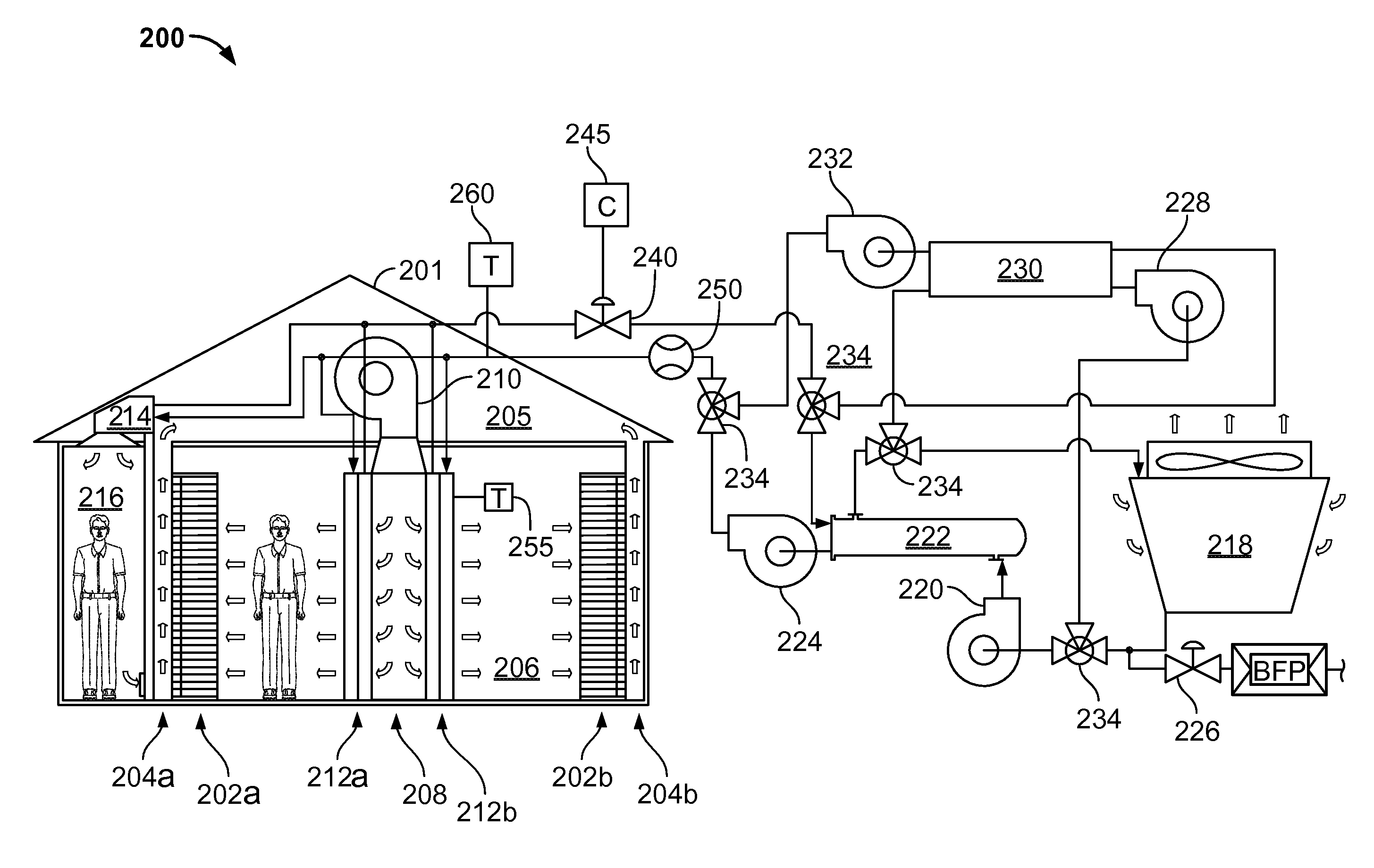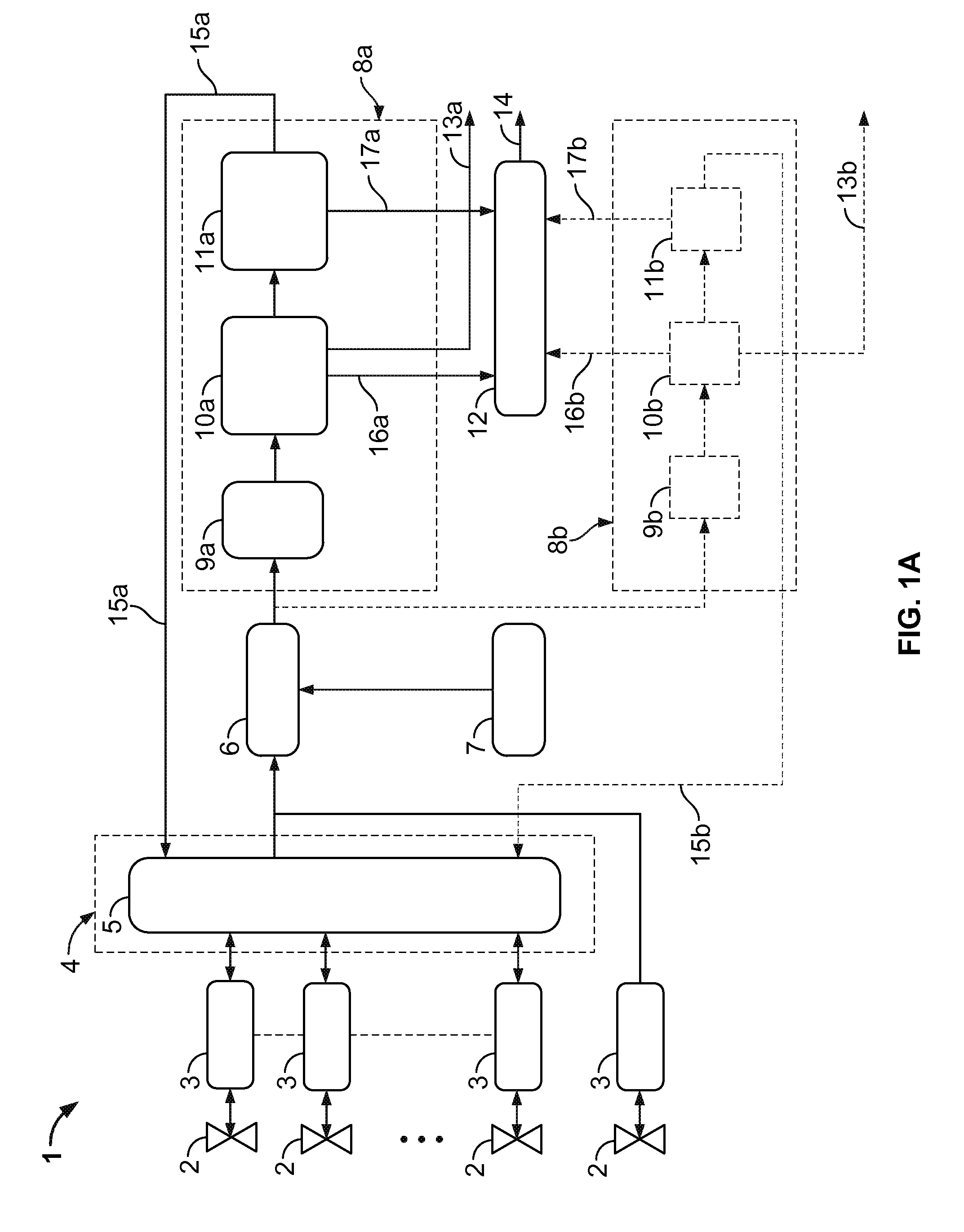Controlling data center cooling systems
a cooling system and data center technology, applied in process and machine control, lighting and heating equipment, instruments, etc., can solve the problems of increasing the cost of cooling system operation, so as to achieve high scalable, new control algorithms, and avoid performance constraints of conventional building automation systems
- Summary
- Abstract
- Description
- Claims
- Application Information
AI Technical Summary
Benefits of technology
Problems solved by technology
Method used
Image
Examples
Embodiment Construction
[0029]This disclosure relates to systems and methods for controlling a cooling system or other infrastructure system (e.g., lighting system, building management system, or otherwise) in a data center. In some aspects, the systems and method include a software framework that, for example, can be executed on one or more computing devices, such as, for instance, one or more rack-mounted computing devices in the data center. The software framework polls multiple controllers that are communicably coupled to controlled / actuatable devices (e.g., valves, fans, pumps, lights, doors, and otherwise) for their respective states. The state data may be aggregated and fed into one or more control algorithms to determine a new and / or adjusted setpoint for the devices. The new and / or adjusted setpoint is communicated back to the controlled devices.
[0030]FIG. 1A illustrates an example computer-implemented system 1 for controlling a cooling system for a data center. The system 1, as illustrated, inclu...
PUM
 Login to View More
Login to View More Abstract
Description
Claims
Application Information
 Login to View More
Login to View More - R&D
- Intellectual Property
- Life Sciences
- Materials
- Tech Scout
- Unparalleled Data Quality
- Higher Quality Content
- 60% Fewer Hallucinations
Browse by: Latest US Patents, China's latest patents, Technical Efficacy Thesaurus, Application Domain, Technology Topic, Popular Technical Reports.
© 2025 PatSnap. All rights reserved.Legal|Privacy policy|Modern Slavery Act Transparency Statement|Sitemap|About US| Contact US: help@patsnap.com



